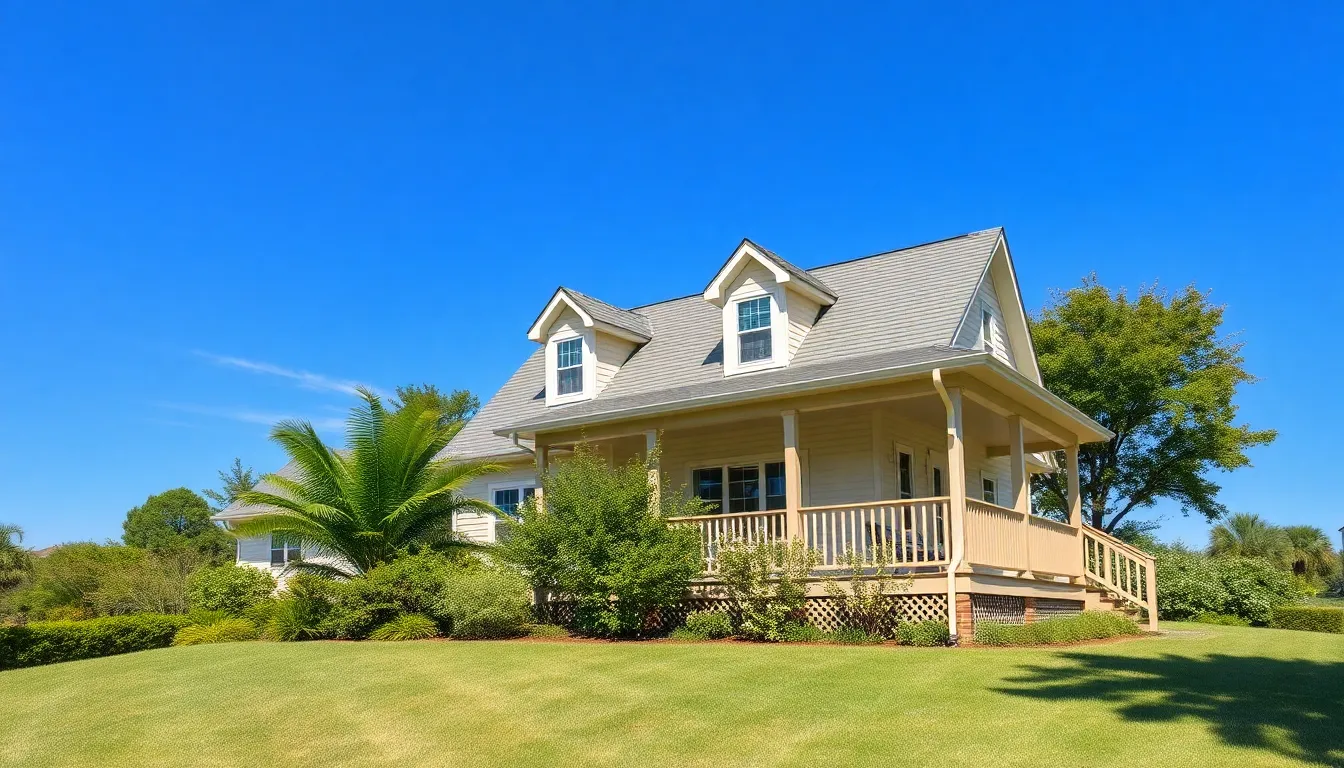Owning a second home can feel like a dream come true, but let’s face it—dreams can turn into nightmares without the right protection. Imagine sipping coffee on your sun-soaked porch only to discover your getaway is more of a getaway-from-disasters zone. That’s where second home insurance swoops in like a superhero, ready to save the day and your wallet.
Whether it’s a cozy cabin in the woods or a beach house with a view, insuring that slice of paradise is essential. After all, nobody wants to deal with unexpected repairs or natural disasters while trying to enjoy a relaxing weekend. With the right coverage, owners can kick back, relax, and focus on what really matters—making memories without the stress of what-ifs lurking in the background. Let’s dive into the world of second home insurance and find out how to keep that dream home safe and sound.
Table of Contents
ToggleUnderstanding Second Home Insurance
Second home insurance offers financial protection for properties that serve as vacation homes or seasonal residences. Understanding this type of coverage helps owners safeguard their investments during unforeseen events.
What Is Second Home Insurance?
Second home insurance refers to specialized policies designed for properties that aren’t primary residences. Coverage typically includes protection against risks such as fires, theft, and natural disasters. Specifics can vary by insurer, but it generally encompasses liability coverage, which protects against injuries incurred on the property. Owners often choose this insurance to ensure they are covered when enjoying their second home.
Importance of Second Home Insurance
Importance of second home insurance lies in its ability to minimize financial loss. Without proper coverage, owners face significant out-of-pocket expenses due to damages or liability claims. Given that many second homes are located in areas prone to severe weather, having insurance becomes crucial. This type of policy also provides peace of mind, allowing homeowners to relax and enjoy their properties without constant worry about potential risks. Neglecting second home insurance can lead to substantial repercussions during emergencies.
Coverage Options for Second Home Insurance

Second home insurance provides crucial protection for vacation properties. Understanding different coverage options helps owners choose the right policy.
Property Coverage
Property coverage insures the physical structure of a second home. It typically covers damages from events like fires, storms, and vandalism. In addition, coverage extends to personal belongings such as furniture and appliances. Many policies include replacement cost coverage, ensuring homeowners receive the value needed to replace lost items. Specific endorsements can also add coverage for unique risks like flood or earthquake, depending on location. Owners need to assess potential hazards and adjust their policies accordingly for comprehensive protection.
Liability Coverage
Liability coverage protects homeowners from claims related to injuries or damages on the property. This coverage typically includes incidents like slips, falls, or other accidents that may occur while guests are visiting. It covers legal expenses and compensation for medical bills if someone gets injured at the second home. Policies usually include limits, so owners must determine whether the standard coverage meets their needs or if purchasing additional liability limits is necessary. Understanding these details helps mitigate financial risks associated with owning a second property.
Factors Influencing Second Home Insurance Premiums
When determining premiums for second home insurance, various factors come into play. Understanding these elements helps homeowners make informed decisions.
Location of the Property
Location significantly impacts insurance premiums. Properties situated in areas prone to natural disasters, such as hurricanes or earthquakes, typically face higher costs. Coastal homes often incur additional scrutiny due to increased risks. Urban environments may also exhibit higher premiums due to theft or vandalism rates. Insurers assess crime patterns and weather-related data to determine pricing. Homes with access to emergency services might benefit from lower premiums as they pose less risk for the insurer.
Usage Frequency
Usage frequency affects the overall premium as well. Homes occupied year-round often receive lower rates compared to vacation homes that remain empty for extended periods. Empty properties pose increased risks for theft and damage, raising the premium cost. Higher frequency of use tends to indicate better property maintenance and quicker response to issues. Insurers also consider occupancy rates when assessing risk profiles. More frequently used homes may qualify for discounts due to their reduced vulnerability.
Tips for Choosing the Right Second Home Insurance
Choosing second home insurance involves careful consideration of various factors to ensure adequate protection and coverage for the property.
Assessing Your Needs
Evaluate specific risks associated with the second home location. Flood zones, fire-prone areas, or regions with high theft rates each require unique coverage types. Determining the primary purpose of the property greatly influences insurance choices. A vacation home used frequently may demand different coverage than one intended for occasional visits. Assess personal belongings inside the home, as higher value items may need additional protection. A thorough assessment of these needs aids in selecting the most suitable policy and coverage amounts.
Comparing Different Policies
Review multiple policies to uncover the best options available. Differences often exist between insurers regarding coverage limits and exclusions. Understand the benefits of comprehensive vs. basic coverage. Some policies include specialized features, such as personal property replacement cost, which can provide significant advantages. Focus on comparing premiums alongside coverage details, as affordability shouldn’t compromise essential protection. Lastly, check customer reviews and claims processes to gauge the reliability and responsiveness of various providers.
Securing second home insurance is a crucial step for any property owner looking to protect their investment. With the potential for unexpected events to disrupt enjoyment, having the right coverage allows homeowners to relax and fully embrace their vacation experience.
Understanding the various coverage options and factors affecting premiums empowers owners to make informed decisions tailored to their specific needs. By prioritizing comprehensive protection, they can mitigate financial risks and ensure their second home remains a safe haven for years to come.
Ultimately, investing in second home insurance isn’t just about safeguarding property; it’s about preserving peace of mind.


